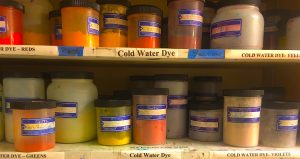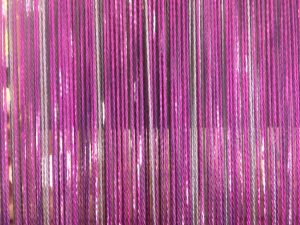Throughout the whole block, we have been learning the many ways to dye various fiber materials. Fibers can be relatively picky about how they want to be dyed, and dyes take careful measuring and planning to come out the desired color. At first it all seemed overwhelmingly mysterious to me. All of the chemicals and temperatures sounded impossible to get right, and I pictured myself melting in a disastrous chemical hot water rainbow. As it turns out, dyes are a load of fun and have a great amount of exploring potential. While the measurements are important while learning, the rules can be bent for different effects and purposes as things become more familiar. The trick is bending the rules on purpose, and not out of carelessness.  We have learned that hot water dyes are used on animal fibers, such as sheep’s wool, alpaca, and mohair, whereas cold-water acid dyes are used on plant fibers such as cotton, linen, and hemp. We even learned how to dye with indigo by a very talented local fiber artist who is also a CC alum.
We have learned that hot water dyes are used on animal fibers, such as sheep’s wool, alpaca, and mohair, whereas cold-water acid dyes are used on plant fibers such as cotton, linen, and hemp. We even learned how to dye with indigo by a very talented local fiber artist who is also a CC alum.
Some students in the class have gotten very creative with dyeing. A funky pair jeans and a few shirts came out of the indigo dye bucket with interesting shibori patterning. Shibori is a type of “resist dying” (sort of like tie dye) we have been learning.

Experimentation with dying has also led to detailed batik pieces and beautiful skeins of yarn. As our final project looms, each of us is preparing to dye hundreds of yards of yarn to the desired colors for our projects. Some skeins will be individually painted, while some will be dunked or soaked for different color qualities.